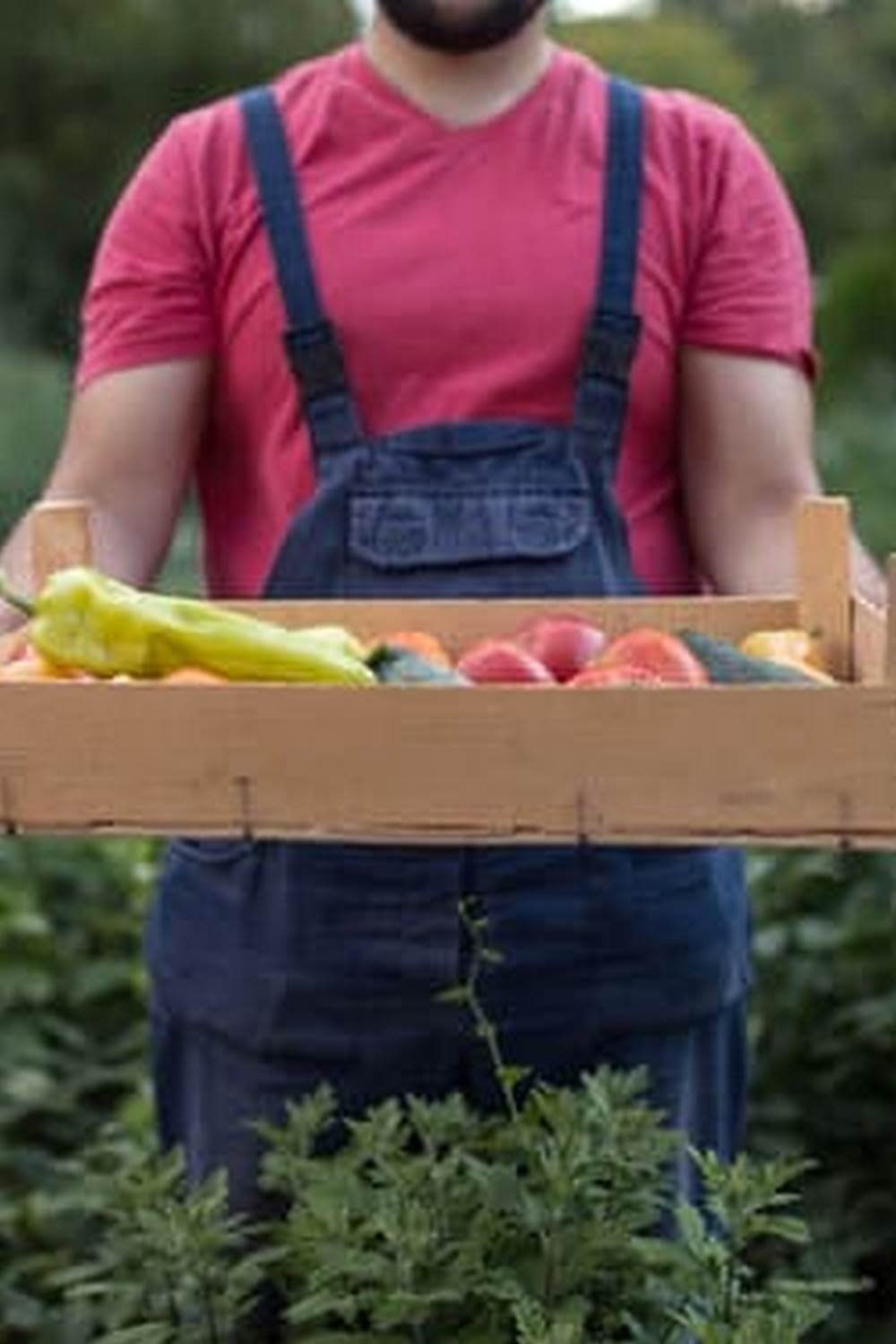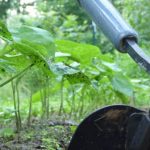Introduction
Transforming your lawn into a vegetable garden can provide both aesthetic and financial benefits. With the installation of a vegetable garden in place of a traditional lawn, you will no longer need to dedicate time and effort to maintain it; instead, you can turn that energy and funds towards actually growing food for yourself or loved ones. From an environmental standpoint, it also provides an invaluable service; by eliminating the need for chemical fertilizers and pesticides, you also reduce your carbon footprint and help conserve water. Finally, using your backyard to produce fresh fruits or vegetables is simply satisfying- there is nothing quite like walking outside your door each day knowing that what is growing in your garden may soon be featured on your dinner table.
Benefits of Creating a Vegetable Garden
Health Benefits: Creating a vegetable garden is immensely beneficial for improving one’s health. Eating seasonal, locally grown fruits and vegetables means the produce is fresh and full of nutrition that our bodies need to stay healthy. Additionally, vegetable gardens are an excellent way to get outside! Working in a garden can provide physical activity and contact with nature which further contributes to overall health and wellbeing.
Financial Benefits: Growing your own vegetables can be incredibly rewarding financially as well as nutritionally! There are numerous cost-saving opportunities when producing your own produce. Not only does one avoid pricey grocery bills for nutritious breads and vegetables, but there are also no shipping costs to consider. Creating a vegetable garden also requires kits and plants that have upfront costs, but these amount to significantly less in the long run than repeatedly purchasing produce from a store or market.
Food Security Benefits: Sustainable food production via gardening reduces the reliance on the greater global food supply chain – something many of us are increasingly aware of since the pandemic started. This helps communities become more resilient with fresh, local sourcing. It also helps reduce wasteful food transportation that impacts climate change, allows households to be self-reliant when other sources might not be available (in times of uncertainty or disruption), and provides access to informally bred/locally grown heirloom varieties not commonly seen at markets (such as heritage tomatoes).
Educational Benefits: A vegetable garden not only provides nutritious food – it may also serve as an educational experience! It’s a great way for children (and adults!) to learn about seeds, plants, soil, pollination, composting – even how water conservation practices help the environment. Plus tending a patch of land can instill healthy habits such as responsibilty for taking care of one’s environment and can inspire stewardship for others through volunteer work or neighborly activities like helping out an elderly neighbor with their gardening tasks!
Prepping the Lawn for Vegetable Garden
Preparing a lawn for a vegetable garden can be an exciting process, especially when the space is maximized for best productivity. The first step before beginning the conversion from lawn to vegetable gardens is to plan out how the space will be used; whether it’s beds or containers. If opting for beds, narrow paths should be designed and laid with pathways in between (of at least 3 feet). To ensure optimal growth, a soil test should also be performed to determine necessary nutrients needed.
Once the plan is established, the next step is to prepare the ground by removing existing foliage and layout fabric weed barriers in each bed area if going with raised beds. Then add organic matter such as compost and aged manure into the beds and mix it well into the current soil in order to break apart clumps and improve drainage. A wheelbarrow can help carry materials where needed and a rake can spread out these materials evenly. Lastly water-in all of these amendments so that they settle into place and set up an irrigation system to automatically water during dry times or heatwaves if desired.
Another option is containers filled with soils specifically designed for vegetables or those amended similarly like described above if deciding against using ground beds. Some gardens prefer using self-watering pots that work well for large plants such as tomatoes or others needing regular hydration due to their size like some squashes. For smaller vegetables and herbs, lightweight pots are suitable since they will require repotting every few years depending on root structure of plantings.
These tips can help make your transformation from lawn to vegetable garden pleasant and easy while ensuring you receive optimum results once harvest time comes around!
Plant Selection
When planning a vegetable garden from scratch, plant selection is essential. Choosing the right varieties of plants can make all the difference in the success of your garden.
Most vegetables can be planted in spring, or during the cooler months for summer harvesting. Depending on where you live, certain varieties may do better than others. Some cool-weather plant options include peas, spinach and kale; whereas warm-season produce like tomatoes, eggplant and peppers should typically be started out after frost season has passed. Consider planting multiple varieties of each type of vegetable and gradually thinning them as they grow in order to ensure “crop rotation” — this is when you cycle different crops through the same space over time to help replenish soil nutrients and discourage pest infestations.
In addition to perennials and heirloom vegetables that come back year after year, there are also many annuals to choose from — such as squash, beans, corn, cucumber and other types of melons — that need to be replanted each season. Do some research online or pick up some books on gardening advice to find more information about when and how long each vegetable takes to mature along with other important details such as germination time frame and sun/water preferences.
Maintenance
Weed Control:
When transforming an existing lawn into a vegetable garden, it is important to weed on a regular basis. This will prevent unwanted plants from taking over your garden and crowding out your vegetables. The best way to do this is by handpulling any weeds you see. Additionally, using a hoe or rototiller can help to loosen the soil, which makes weeding easier and more effective—just be careful not to disturb the roots of your vegetables or other desirable plants. To make sure that any new weeds don’t appear in your garden, cover the soil with mulch or fabric weed barriers to make sure they don’t have access to sunlight.
Irrigation Tips:
If possible, the best method for watering your vegetable garden is to use drip irrigation instead of sprinklers so you can water the base of each plant rather than overhead watering that could spread disease between plants. If you’re creating several beds, install gutters between them for precise watering. Calculate how much water each bed needs based on its size and specific needs and keep track of weather patterns in order to adjust your irrigation system accordingly.
Improving Soil Quality:
Work on improving the soil quality before planting any vegetables in order give them proper nutrition and ensure good growth. Test your soil pH level first and if necessary add compost or other fertilizers like bone meal or blood meal to raise or lower it accordingly — too acidic or basic of an environment can cause bad growth and poor harvests over time. Additionally, add topsoil (up to 4-5 inches) before planting if necessary — this will greatly improve drainage and accommodate root growth while ensuring enough nutrients are present for healthy plants down the line
Pest/Predator Control
Organic Pest Control Techniques: In order to create an effective vegetable garden, organic pest control is vital. One of the most important ways to ensure that pests stay away is to keep your area clean and well-maintained. Clean up any fallen fruits or vegetables right away, remove weeds and dead plant material, and use beneficial insects like ladybugs and praying mantises. You can also introduce barriers such as row covers, hot pepper wax spray, diatomaceous earth (DE) powder containing food grade DE, or natural predator deterrents such as garlic or onion plants that ward off certain pests.
Deterring Predators: When converting your lawn into a vegetable garden, it’s important to consider predators that could potentially disrupt your garden. You may want to surround the perimeter of your garden with fencing made from chicken wire or hardware cloth or sturdy netting in order to limit access for large wildlife like deer and groundhogs. Additionally, you can lay down motion-activated lights near the edges of the yard which can repel night predating animals including raccoons, rabbits and skunks.
Natural Weed Control Methods: As you convert your lawn into a vegetable garden it is also very important to eliminate potential weeds so they don’t outcompete with your vegetables. This can be done by hand-weeding any existing weeds in the area before planting your vegetable seedlings or sowing seeds directly in the beds. Other methods include mulching around crops with a thick layer of newspapers or cardboard covered by straw, using pre-emergent herbicides that prevent weed seeds from germinating in soil, creating an environment of healthy soil through composting that helps suppress weed growth and applying sticky mulch mats around your plants as another effective physical barrier against weed germination.
Extending the Growing Season
The end of summer doesn’t mean the end of gardening – even in places with cold climates. Fortunately, there are plenty of tools and techniques available for transforming your lawn into a vegetable garden that keeps producing over the colder months.
For starters, you can purchase season extension tools such as plastic or cloth row covers to keep your crops warm during chilly spring and fall weather. You can also build cold frames from old windows and wood to protect your plants from frosts.
You can also invest in a high tunnel also known as an unheated greenhouse which is made with metal tubing and plastic sheeting to create an enclosed space to extend the growing season by providing shelter against winter weather. Another option is an insulated mini hoop-house if you’re looking for something less invasive on the budget but just as effective at extending your crop’s growing season.
Another important tool is a soil thermometer since tracking soil temperature helps you determine when it’s time to plant various crops for specific seasons so that you know that conditions are ideal for their success. Additionally, look for companion planting options like garlic planted near tomato crops which repel pests common in this vegetable family when added and kept healthy throughout their maturation period.
Finally, prepare beforehand with quality seed and soil amendments so that when spring rolls around again, you’ll have everything ready for maximum garden performance all year long!
Using the Harvest
Creating a vegetable garden from your lawn is an exciting and rewarding experience. Once you have laid down the basic guidelines for the garden and planted the seeds, it’s time to begin harvesting the crops. What do you do with all that produce though? With the right recipes and canning ideas, you will be able to taste delicious food, preserved for later use.
The best way to preserve your harvest is to can it. Canning involves boiling jars and lids along with sealing of preserving liquid over produce that has been treated and prepared in a certain way. This will help to create long lasting shelf-stable food that can last up to 2 years when stored properly. Additionally, freezing or drying are other good preservation methods that allow you to store vegetables for a longer period of time.
Finally, once you have harvested, preserved, or cooked your vegetables there are still other ways to use them – like sharing them with family and friends! You can gift your canned goods as presents or host a potluck featuring your fresh harvest party where everyone can sample the garden’s bounty together. Doing so will not only show off your hard work but also provide some wonderfully tasty treats!
Closing
Closing:
Transforming a lawn into a vegetable garden has several benefits. It can help to save money, create an environment for food production that is healthier than the chemicals present in conventional lawns, and allows households to be more self-sufficient by growing fresh produce right in their backyard. Growing one’s own food is especially rewarding since it can be tailored to individual tastes, vary with seasons and provide unique experiences like home-made preserves or outdoor harvesting activities. Making the transition from lawn to vegetable garden requires some work but offers many opportunities for exploration along the way, from broadening an understanding of soil nutrition needs to learning how to select the best plants for one’s local climate or experimenting with different layout techniques. Simplicity is key-planning ahead and choosing lower maintenance options that fit any lifestyle will pay off in the long run.
Summary of Lawn to Vegetable Garden Practices:
Transitions from lawn to garden require appropriate preparation such as amending soil with compost or other organic matter and removing any existing turf grasses before planting vegetables. The selection of vegetables should take into consideration types suited for local climate or soil conditions as well as preferences. When planting, spacing should take into consideration sunlight requirements and potential shade and water sources should be considered in order to ensure adequate water throughout the gardening season. Proper weed prevention is also important such as by covering soil with mulch or other materials and consistently weeding during growth season. Further gardening practices may include trellising, companion planting, crop rotation, use of cover crops throughout growing season and use of row covers (e.g., floating row cover) over susceptible species when needed.
Ideas for Further Reading and Resources:
Books on organic vegetable gardening offer individuals looking to make the transition from lawn to garden detailed guidance specific areas including proper layout and spacing techniques as well as plant selection advice depending on one’s location; examples include Organic Vegetable Gardening Made Easy (Green Harvest Publishing) or Rodale’s All New Encyclopedia of Organic Gardening (Rodale Books). For online resources focused on this topic specifically, Extension Services around the country offer Region-specific guides such as Alabama Gardener’s Guide by Chase Kantz (University of Georgia Extension Service). Also available are online articles which include “The Beginner’s Guide To Transitioning Your Lawn To An Organic Vegetable Garden” (Organic Authority) which provides tips around creating a successful transition plan along with overview information about making sure grounds are ready prior to planting; additional resources like webinars such as those presented through UMichigan Extension might also be beneficial for direct guidance related to transitioning a space from lawn to edible landscape.

If you’re looking to get into vegetable gardening, or are just looking for some tips on how to make your current garden better, then you’ve come to the right place! My name is Ethel and I have been gardening for years. In this blog, I’m going to share with you some of my best tips on how to create a successful vegetable garden.





